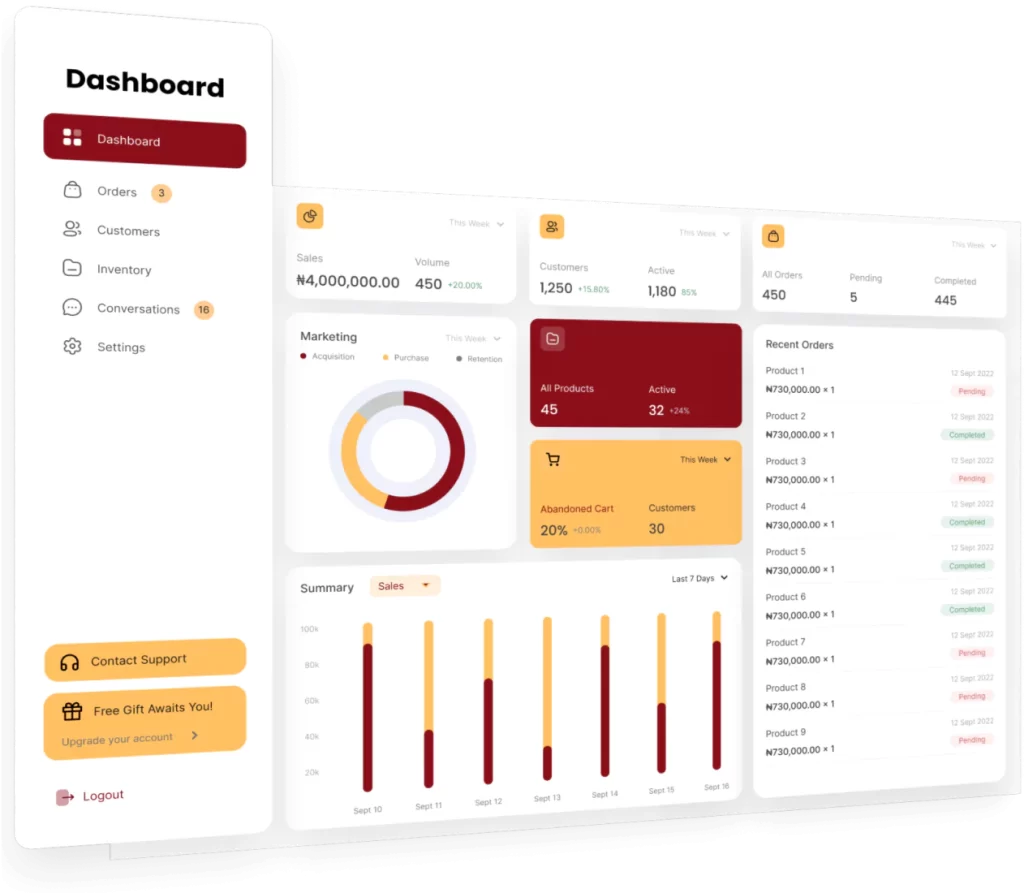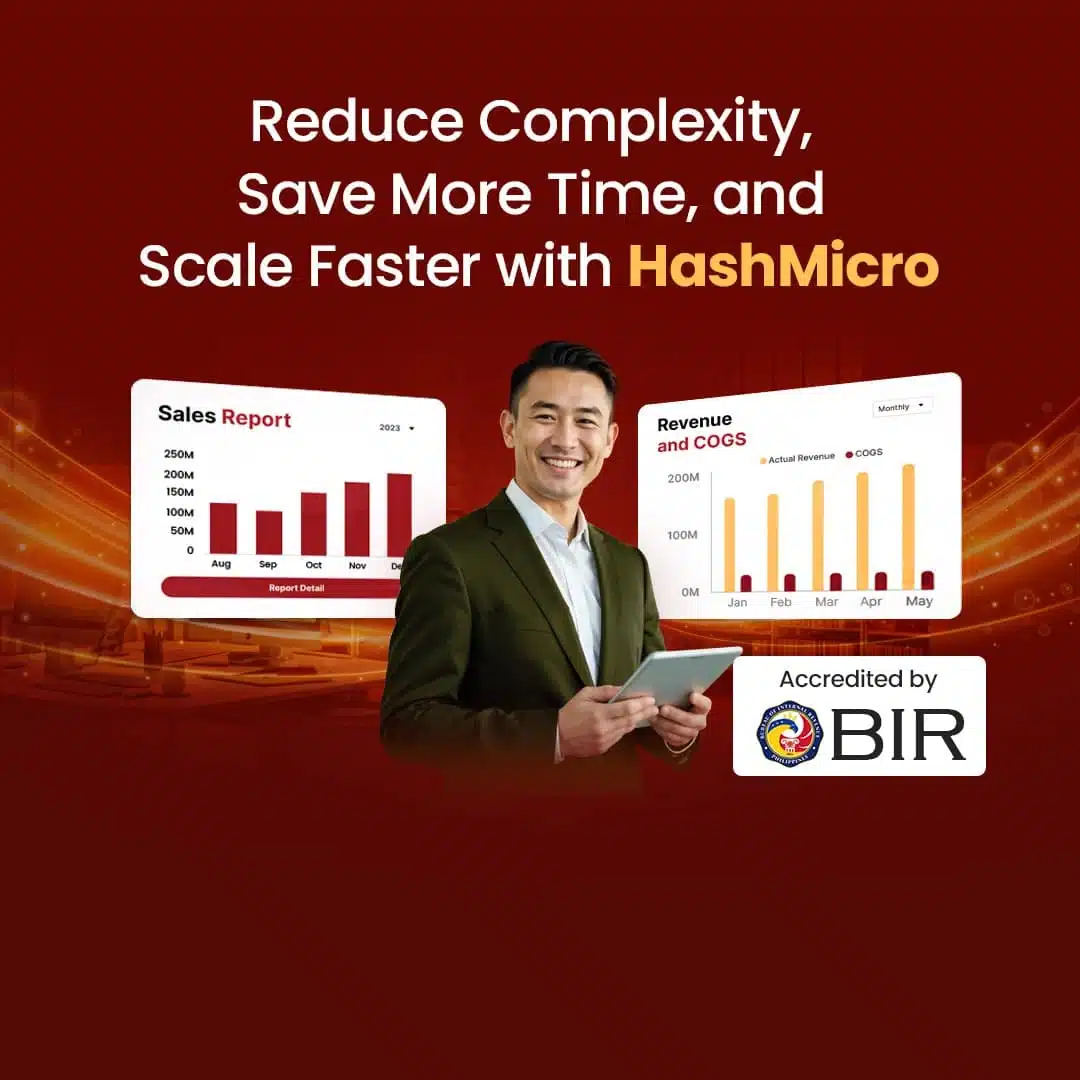Are you a fellow Filipino entrepreneur na gustong mag-level up ng business mo? Imagine seamlessly connecting all your business systems, with real-time data empowering you to make informed decisions that drive growth. That’s the power of ERP integration, a strategy more businesses in the Philippines are adopting to stay competitive.
It might sound technical, but it’s a game-changer for businesses of all sizes. Whether managing inventory, customer relationships, or financials, integrating your ERP system with other applications streamlines operations, reduces errors, and saves time. By the end of this guide, you’ll see why ERP integration is essential for any business aiming for long-term success in the Philippines.
Key Takeaways
|
Table of Contents

What is ERP Integration?
ERP integration is the process of connecting your ERP with other business applications and systems. This connection allows data to flow freely between different departments, eliminating the need for manual data entry and reducing the risk of errors. Imagine your sales team closing a deal, and that information automatically updates your inventory and accounting systems—that’s ERP integration at work.
For Filipino entrepreneurs, the importance of ERP integration cannot be overstated. It ensures that all parts of your business are on the same page, providing a single source of truth for decision-making. This is particularly crucial in a rapidly growing business environment where staying agile and responsive can make or break your success.
Why is ERP Integration Important for Your Business?

Moreover, ERP integration supports business growth by providing a scalable solution that grows with your company. As your business expands, the integration ensures that your systems can handle increased data and transactions without a hitch. This streamlined operation not only saves time and money but also frees up resources to focus on what truly matters—growing your business.
Common Areas for ERP System Integration
Integrating your ERP system with other essential business software is key to maximizing efficiency and ensuring smooth operations. Well, one of the most common integrations is with Accounting Software, which allows for real-time financial tracking and reporting, ensuring that your financial data is always accurate and up-to-date.
- Supply Chain Management (SCM): Integrating SCM with your ERP enhances visibility across the supply chain, improving inventory management, order processing, and supplier relationships.
- Human Resources (HR) Software: This integration streamlines employee management, from payroll and benefits administration to performance tracking and recruitment.
- Customer Relationship Management :(CRM) CRM integration aligns sales and customer service efforts, providing a 360-degree view of customer interactions and improving service quality.
- Point of Sale (POS) Systems: Connecting your POS with ERP ensures seamless inventory management, sales tracking, and customer data synchronization in real time.
- Inventory Management Software: This integration helps in tracking stock levels, managing orders, and optimizing inventory across multiple locations within the ERP system.
- Manufacturing ERP Systems: Manufacturing ERP optimize production schedules. Aligning manufacturing processes with customer demands and resource availability.
These common ERP life cycle integrations ensure that all areas of your business, from accounting to customer relationship management, work together seamlessly. By connecting these systems, you create a unified operation that enhances efficiency, supports business growth, and drives better decision-making.
Challenges and Risks of ERP Integration
While ERP integration offers many benefits, it also comes with its challenges. One common issue is data inconsistency, which can arise if the integration is not carefully managed. This can lead to errors in reporting and decision-making, potentially harming your business operations. Additionally, integrating systems from different vendors can be complicated, requiring specialized knowledge and expertise.
There are also risks associated with ERP integration, such as data breaches or loss of information during the integration process. To mitigate these risks, it’s essential to work with experienced professionals and ensure that robust security measures are in place throughout the integration process. Regular testing and monitoring can also help identify and resolve issues before they impact your business.
Best Practices for Successful ERP Integration

To ensure a smooth ERP integration, start with a thorough data cleanup before beginning the process. This involves reviewing and organizing your existing data to ensure accuracy and consistency. Clean data will make the integration process smoother and reduce the likelihood of errors once the systems are connected.
Careful analysis of your integration requirements is also crucial. Understand what you need from the integration and prioritize these needs to avoid unnecessary complications. Security should be a priority throughout the process, with measures in place to protect sensitive data and regulation compliance. Following these best practices will help ensure a successful integration that supports your business goals.
Benefits of Seamless ERP Integration
A well-executed ERP integration boosts productivity by streamlining operations and reducing manual tasks. Connecting all systems provides real-time access to accurate data, enabling faster decision-making and responses. This efficiency not only enhances operations but also leads to cost savings as your business runs smoothly with fewer errors. Integration also improves agility, making it easier to scale operations as your business grows.
Systems working harmoniously help your business adapt quickly to market changes. Consequently, this adaptability gives you a competitive edge in the Philippines’ dynamic market. Moreover, seamless integration ensures your business remains efficient, responsive, and well-prepared for growth. It enables your business to operate more effectively in an increasingly competitive environment.
Furthermore, investing in ERP integration strengthens your business foundation. By aligning all systems, you create opportunities for sustained success, allowing for smoother and more streamlined operations. As your business expands, these optimized systems equip you to face future challenges with confidence, ensuring growth and success.
ERP Integration Checklist
To guide you through the integration process, here’s a practical checklist:
- Evaluate Your Current Systems: Understand what systems you have and how they will interact with the ERP.
- Define Integration Goals: Set clear objectives for what you want to achieve with the integration.
- Choose the Right Integration Method: Select a method that best suits your business needs.
- Plan Data Migration Carefully: Ensure that data is accurately transferred and organized.
- Test the Integration: Conduct thorough testing to identify and resolve any issues.
- Monitor Post-Integration Performance: Continuously monitor the integrated systems to ensure they function as expected.
Following this checklist will help ensure a smooth and successful ERP integration that aligns with your business goals.
HashMicro’s ERP Solution for Easy Integration

When it comes to ERP integration, choosing the right software is crucial for ensuring a smooth and successful process. HashMicro’s ERP software stands out as an excellent choice for Filipino entrepreneurs looking to streamline their business operations. With its robust features and local expertise, HashMicro offers a comprehensive solution tailored to the needs of businesses in the Philippines.
- Comprehensive Integration Capabilities: HashMicro’s ERP software seamlessly integrates with various business applications like CRM, HR, and e-commerce platforms, ensuring all systems work harmoniously.
- Scalability and Flexibility: The software grows with your business, making it ideal for companies at any development stage.
- User-Friendly Interface: Despite its advanced features, HashMicro’s ERP is easy to use, ensuring your team quickly adapts to the integration.
- Real-Time Data Access: With HashMicro, you get real-time insights into your business operations, empowering you to make informed decisions faster.
- Local Support and Expertise: HashMicro understands the unique challenges faced by businesses in the Philippines and offers localized support to ensure a smooth implementation process.
Choosing HashMicro’s best ERP system Philippines rather than others means investing in a system that seamlessly integrates your business processes. It also provides the tools and support needed to drive growth effectively. If you are a growing enterprise, HashMicro’s ERP solution can help you achieve your business goals more efficiently.
Conclusion
Frequently Asked Questions
-
What is the primary purpose of an ERP system is integration?
The primary purpose of ERP system integration is to connect various business processes and departments within an organization. This integration ensures seamless data flow, eliminates manual data entry, reduces errors, and provides a unified view of operations, enabling more informed decision-making and improving overall efficiency.
-
How long does ERP integration take?
ERP integration generally takes several months to over a year, depending on system complexity and organization size. However, HashMicro’s ERP solution stands out by offering faster integration, often within days of ordering. This rapid deployment allows businesses to quickly benefit from streamlined operations and improved efficiency, making it ideal for companies seeking swift implementation.
-
What is the role of ERP in logical integration?





































